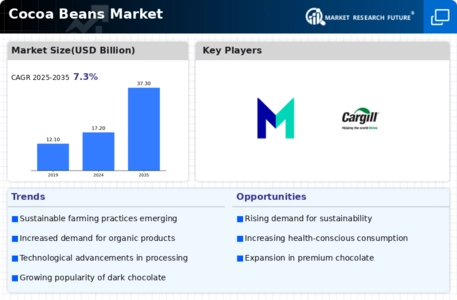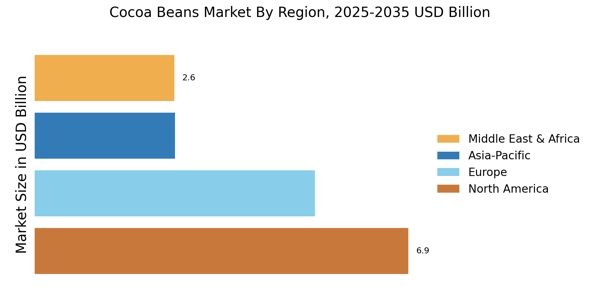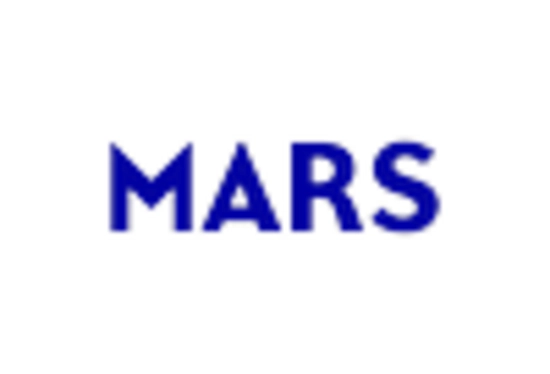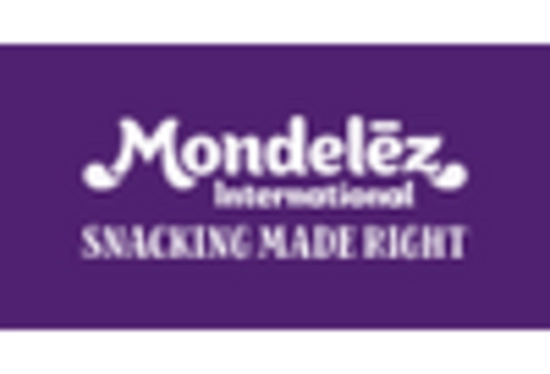Growth in Confectionery Exports
The Cocoa Beans Market is positively influenced by the growth in confectionery exports, particularly from regions known for cocoa production. Countries such as Ivory Coast and Ghana are major exporters of cocoa beans, and their efforts to enhance quality and sustainability practices are yielding positive results. Recent data suggests that cocoa bean exports from these regions have increased by approximately 10% in the last year, driven by rising international demand. This trend not only supports local economies but also strengthens the Cocoa Beans Market by ensuring a steady supply of high-quality beans to meet global confectionery needs.
Rising Demand for Dark Chocolate
The increasing consumer preference for dark chocolate is a notable driver in the Cocoa Beans Market. Dark chocolate, often perceived as a healthier alternative to milk chocolate, has gained traction due to its higher cocoa content and associated health benefits. Reports indicate that the dark chocolate segment is projected to grow at a compound annual growth rate of approximately 8% over the next five years. This trend is likely to bolster the demand for cocoa beans, as manufacturers seek to source high-quality beans to meet the rising consumer expectations. Consequently, the Cocoa Beans Market is experiencing a shift towards premium and specialty cocoa varieties, which may enhance the overall market value.
Expansion of Chocolate Product Offerings
The Cocoa Beans Market is witnessing a diversification in chocolate product offerings, which serves as a significant market driver. Manufacturers are increasingly innovating with flavors, textures, and formats to cater to evolving consumer tastes. For instance, the introduction of chocolate bars infused with exotic flavors or combined with superfoods is becoming more prevalent. This trend not only attracts a broader consumer base but also encourages higher cocoa bean utilization in production. As a result, the Cocoa Beans Market is likely to see an uptick in demand for various cocoa bean types, particularly those that can provide unique flavor profiles, thereby enhancing market dynamics.
Technological Advancements in Processing
Technological advancements in cocoa processing are playing a pivotal role in shaping the Cocoa Beans Market. Innovations in processing techniques, such as improved fermentation and drying methods, are enhancing the quality and flavor of cocoa beans. These advancements not only increase efficiency but also reduce waste, thereby optimizing production costs. As manufacturers adopt these technologies, the overall quality of cocoa products is expected to improve, which may lead to higher consumer satisfaction and demand. Consequently, the Cocoa Beans Market is likely to benefit from these technological developments, fostering a more competitive landscape.
Increased Investment in Sustainable Farming
Sustainability has emerged as a critical focus within the Cocoa Beans Market, with increased investment in sustainable farming practices. Stakeholders are recognizing the importance of environmentally friendly cultivation methods to ensure the long-term viability of cocoa production. Initiatives aimed at reducing deforestation and promoting biodiversity are gaining traction, supported by both governmental and non-governmental organizations. This shift towards sustainability is likely to enhance the reputation of cocoa products, potentially leading to higher consumer demand. As a result, the Cocoa Beans Market may experience a transformation in sourcing practices, with a greater emphasis on ethically produced cocoa beans.


















Leave a Comment